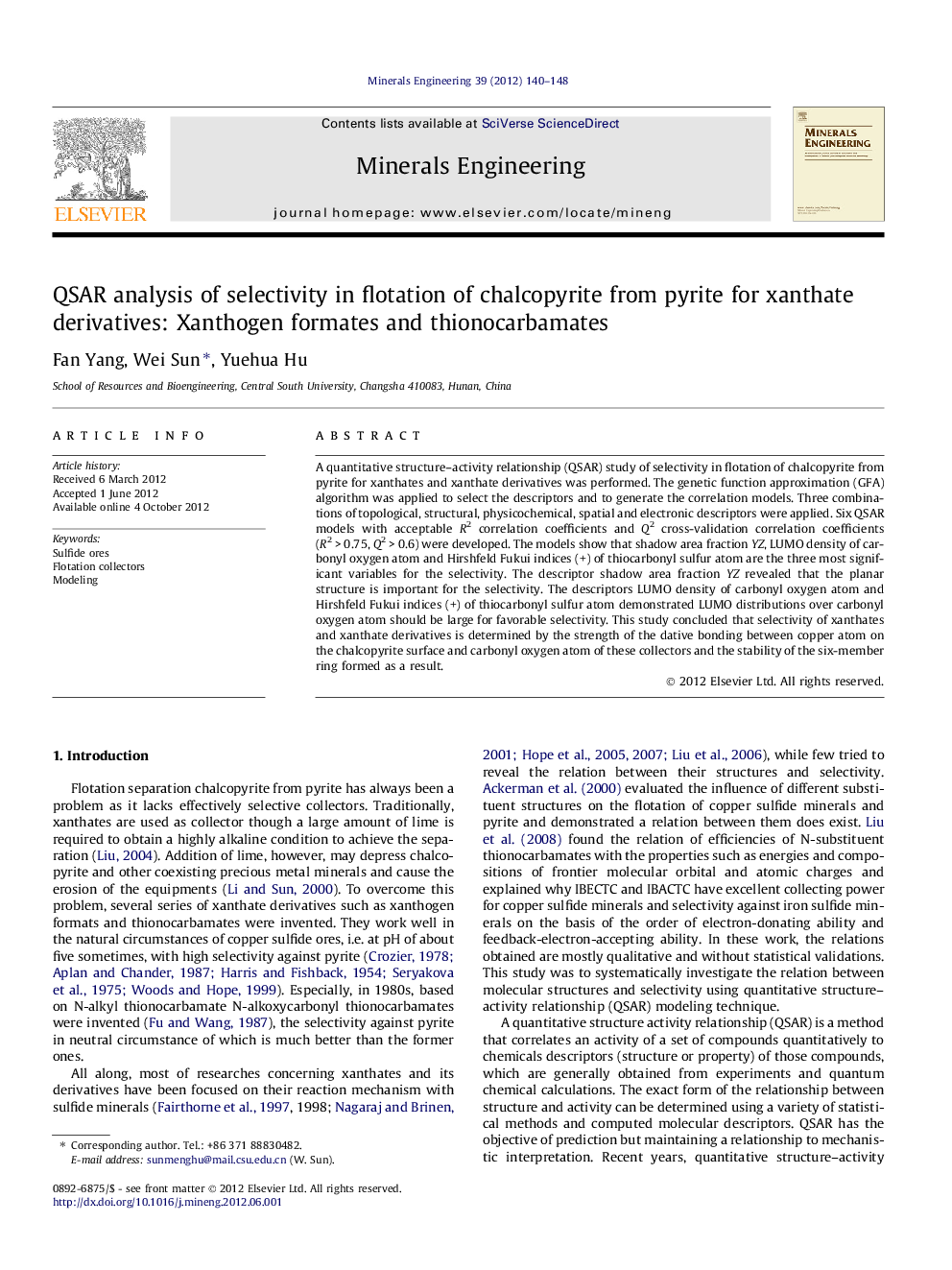| کد مقاله | کد نشریه | سال انتشار | مقاله انگلیسی | نسخه تمام متن |
|---|---|---|---|---|
| 233591 | 465353 | 2012 | 9 صفحه PDF | دانلود رایگان |

A quantitative structure–activity relationship (QSAR) study of selectivity in flotation of chalcopyrite from pyrite for xanthates and xanthate derivatives was performed. The genetic function approximation (GFA) algorithm was applied to select the descriptors and to generate the correlation models. Three combinations of topological, structural, physicochemical, spatial and electronic descriptors were applied. Six QSAR models with acceptable R2 correlation coefficients and Q2 cross-validation correlation coefficients (R2 > 0.75, Q2 > 0.6) were developed. The models show that shadow area fraction YZ, LUMO density of carbonyl oxygen atom and Hirshfeld Fukui indices (+) of thiocarbonyl sulfur atom are the three most significant variables for the selectivity. The descriptor shadow area fraction YZ revealed that the planar structure is important for the selectivity. The descriptors LUMO density of carbonyl oxygen atom and Hirshfeld Fukui indices (+) of thiocarbonyl sulfur atom demonstrated LUMO distributions over carbonyl oxygen atom should be large for favorable selectivity. This study concluded that selectivity of xanthates and xanthate derivatives is determined by the strength of the dative bonding between copper atom on the chalcopyrite surface and carbonyl oxygen atom of these collectors and the stability of the six-member ring formed as a result.
► Selectivity of xanthates and its derivatives was analyzed using QSAR method.
► Six statistically reliable QSAR models were developed.
► Two factors that determine the selectivity were identified.
Journal: Minerals Engineering - Volume 39, December 2012, Pages 140–148